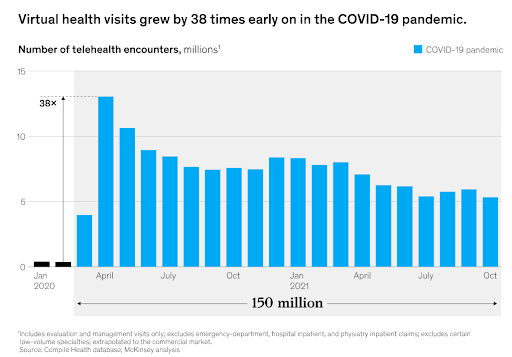
In a world where Dr. Google often reigns supreme, diagnosing ailments at the tap of a screen, healthcare providers are racing to keep up with the shifting digital sands.
Search engine optimization (SEO) has evolved from a mere luxury to an indispensable tool in the quest for patient acquisition and satisfaction.
This article dissects the anatomy of successful SEO strategies, examining how healthcare providers can optimize their digital presence and create a positive patient experience.
By understanding the modern healthcare landscape, harnessing the power of data-driven insights, and staying attuned to the pulse of the digital world, your practice can survive and thrive in the ever-evolving realm of patient acquisition and satisfaction.
Understanding the Healthcare Landscape and Patient Needs
The digital revolution has transformed how patients seek and consume information, with a marked shift toward online research and reviews.
Gradually, the healthcare sector is evolving toward a patient-focused approach, placing the requirements and inclinations of patients at the heart of care provision.
This transformation is partly propelled by consumers who are prepared to allocate between $300 billion and $400 billion to healthcare expenditures for active health management, as stated in a McKinsey & Company report.
Furthermore, the rise of telehealth, accelerated by the pandemic, has left a lasting impact on patients’ preferences for convenience and safety.

Image via McKinsey & Company
It’s vital to harness the power of SEO to stay in tune with these evolving patients’ needs and to ensure visibility, accessibility, and relevance in the digital space. One way to do this is by analyzing your patient and audience.
Examine the demographics of your target audience, such as age, gender, location, and income level. For example, if your practice specializes in senior care, your content and SEO efforts should cater to the needs and concerns of older adults and their caregivers.
Stay up-to-date on the latest developments in your field by attending conferences, reading industry publications, and participating in professional associations.
This ensures that your business’s digital presence reflects current best practices and trends. It also gives you an edge over the competition.
Examine the digital presence of your competitors, noting their strengths and weaknesses. For example, if a competing practice offers a comprehensive library of informative articles on its website, you might consider creating a similar resource for your patients.
Keyword Research for Healthcare Providers
Optimizing your online presence begins with identifying the right keywords and phrases that patients use when searching for healthcare services.
Identifying Relevant Keywords and Phrases
Consider your location and any unique services you offer. A specialist in sports medicine located in Denver could focus on terms like “sports medicine Denver” or “sports injury clinic Denver.”
Similarly, you could identify keywords related to common medical conditions and treatments, such as “pediatric asthma treatment” for a pediatric clinic or “knee replacement surgery” for an orthopedic center.
Analyzing Keyword Competition and Search Volume
Tools like Google Keyword Planner or Semrush can help you identify your target keywords’ competitiveness and search volume. Strive for a balance between high search volume and low competition to maximize your chances of ranking well in search results.
Integrating Keywords Into Content and Website Structure
Once you’ve identified relevant keywords, weave them organically into your website’s content, meta tags, and URL structure. Avoid keyword stuffing, as it can lead to penalties from search engines and create a poor user experience. Organic keyword insertion can benefit both your readers and your SEO.
Optimizing Website Content and Structure
Creating a user-friendly, informative, and engaging website is crucial to attracting and retaining patients. Consider the following strategies to ensure your site resonates with your target audience:
Creating Informative and Engaging Content
- Blog posts and articles: Publish regular, high-quality blog posts and articles that educate and inform your audience, then build high-quality backlinks to these pages to drive traffic to your site.
- Patient testimonials and case studies: Share real-life stories of patient success to build trust and credibility. For instance, a bariatric surgery center could showcase before-and-after photos and testimonials from satisfied patients who have achieved significant weight loss.
Ensuring Website Accessibility and User Experience
- Mobile responsiveness: With over half of all web traffic coming from mobile devices, it’s essential to have a mobile-friendly website. Test your site mobile responsiveness using tools like Google’s Mobile-Friendly Test or usability testing software.
- Straightforward navigation and calls to action: Make it easy for patients to find the information they need and schedule appointments. Prominently display contact information and a “book now” button on every page. Consider opting for website redesign services if your current website lacks CTAs.
- Good performance: Speed is a critical factor when it comes to user experience. If your website is loading slowly, people will click away and look for assistance elsewhere. That’s why it’s important to implement all performance-enhancing techniques you can find and act quickly if you see that your site isn’t as responsive as it should be.
Schema Markup, Local SEO, and Structured Data for Better Visibility
- Local SEO: Utilize Google My Business to provide search engines with additional information about your website, such as contact details, office hours, and services offered. Use other local SEO tools recommended by Attrock to drive local visits to your practice.
- Structured data: Organize your website’s content in a structured manner using schema, to make it easier for search engines to understand and index your site. This can also improve the appearance of your site in search results, increasing click-through rates.
Build Website Authority
Developing website authority is a necessary element. Higher website authority helps in ranking your website content. You need to follow the right practices and use the right tool to get links from other sites.
Make sure you are taking links from relevant and good authority websites only. Spam and link farm-based websites can harm in a negative way.
Building a Strong Online Reputation
The adoption of telehealth services experienced a significant boost during the COVID-19 pandemic.
A study conducted in 2020 revealed that telehealth utilization during the initial peak of the pandemic (March to April 2020) rose from under 1% of visits to as much as 80% in areas with high pandemic prevalence.
Furthermore, a recent ASPE report discovered that Medicare telehealth usage saw a 63-fold increase between 2019 and 2020.
The rise of telehealth services has highlighted the importance of a strong online reputation for healthcare providers.
As more patients turn to virtual consultations and remote care, they are increasingly relying on online reviews, testimonials, and other digital resources to evaluate and choose their healthcare providers.
To bolster your digital presence, encourage and manage patient reviews by politely asking satisfied patients to leave feedback on platforms like Google, Yelp, or Healthgrades and showcase positive reviews on your website and social media profiles. The social proof can work wonders for your business.
Analyzing and Measuring SEO Success
Analyzing and measuring SEO for healthcare success is crucial for refining your strategies and ensuring continued growth. Monitor key performance indicators (KPIs) such as organic search traffic, conversion rates, and patient satisfaction scores.
Monitor the volume and sources of traffic to your website using tools like Google Analytics. For example, if you notice an increase in organic search traffic after publishing a series of blog posts about diabetes management, you can infer that your content resonates with your target audience and plan to create more similar content.
The healthcare industry and marketing careers are becoming increasingly intertwined as SEO, the need for patient-centric communication, and effective online presence grow.
In today’s digital age, healthcare providers must adopt innovative marketing strategies to attract and retain patients while also fostering trust and credibility.
For those interested in starting a career in healthcare marketing, the first steps typically involve obtaining a relevant degree, such as in marketing, communications, or business administration, and gaining experience through internships or entry-level positions.
You can also read this article to know the best method how to start a career in marketing.
Embracing SEO for Healthcare Practice
The prescription for a thriving healthcare practice in the digital age hinges on an effective SEO strategy.
By understanding SEO best practices for the healthcare landscape and patient needs like conducting thorough keyword research, focusing on local SEO, and consistently measuring and refining your efforts, you can position your practice as a beacon of patient satisfaction.
Like any potent therapy, persistence, and flexibility are essential ingredients for the success of your SEO efforts. Remain vigilant to the heartbeat of the digital landscape, and your practice will not merely endure but thrive in the domain of patient acquisition marketing.

